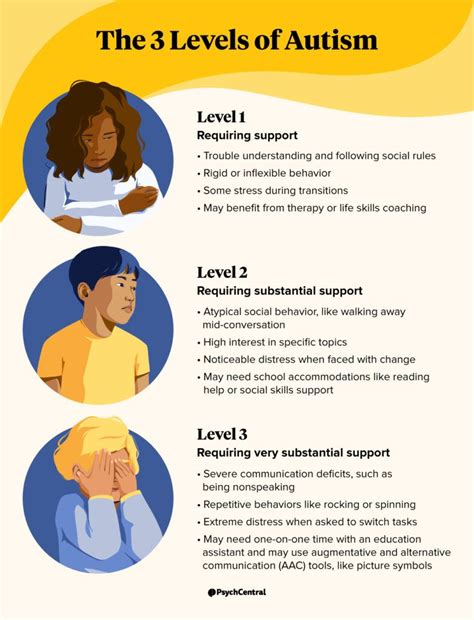
A disruptive airline passenger was filmed engaging in a violent altercation, involving hair-pulling and spitting, aboard a Southwest Airlines flight, resulting in her removal from the aircraft and subsequent arrest.
A viral video circulating online captures a Southwest Airlines passenger’s appalling behavior, showcasing a physical assault on another traveler that led to the disruptive individual’s ejection from the flight and apprehension by law enforcement. The incident, which unfolded before takeoff, involved a woman identified as Arielle Jean Jackson, 29, engaging in a physical confrontation that shocked fellow passengers and triggered a swift response from the flight crew.
The altercation began when Jackson, according to reports and video evidence, initiated a dispute with another female passenger. The disagreement quickly escalated into physical violence, with Jackson seen pulling the other passenger’s hair, spitting on her, and yelling obscenities. Other passengers reacted with audible gasps and expressions of disbelief as the situation unfolded. The exact cause of the initial argument remains somewhat unclear, but witness accounts suggest it may have stemmed from a seating dispute or a disagreement over overhead bin space.
The video, which quickly spread across social media platforms, shows Jackson standing in the aisle, aggressively confronting the seated passenger. The footage clearly depicts Jackson reaching over the seats and grabbing the other woman’s hair, pulling her head forward. The assaulted passenger can be heard screaming and attempting to defend herself. Several other passengers intervened, attempting to separate the two women and de-escalate the situation. One male passenger can be seen attempting to physically restrain Jackson, while others called for assistance from the flight crew.
Flight attendants swiftly responded to the disturbance, attempting to calm Jackson and restore order on the aircraft. However, their initial efforts to de-escalate the situation proved unsuccessful. Jackson reportedly continued to yell and act aggressively, refusing to comply with the flight crew’s instructions. Given the severity of the situation and the potential safety risk posed by Jackson’s behavior, the captain made the decision to remove her from the flight.
Law enforcement officers were called to the scene to escort Jackson off the plane. She was subsequently arrested and taken into custody. The specific charges filed against her have not been officially released, but they are expected to include assault, battery, and disorderly conduct. Depending on the severity of the injuries sustained by the victim and the specific laws of the jurisdiction, Jackson could face significant penalties, including fines, jail time, and a permanent criminal record.
The incident has sparked widespread outrage and condemnation on social media. Many viewers expressed shock and disgust at Jackson’s behavior, criticizing her for her violent actions and lack of respect for other passengers. Some commenters called for her to be banned from flying on any airline, while others emphasized the importance of holding individuals accountable for their actions in public spaces.
Southwest Airlines issued a statement addressing the incident, confirming that a passenger had been removed from the flight due to disruptive behavior. The airline emphasized its commitment to providing a safe and comfortable travel experience for all passengers and stated that it does not tolerate violence or disruptive behavior of any kind. Southwest Airlines is cooperating with law enforcement in their investigation of the incident. The airline is also conducting its own internal review to determine if any further action is necessary.
This incident serves as a stark reminder of the challenges that airlines and flight crews face in managing disruptive passengers. Air rage incidents have become increasingly common in recent years, fueled by a variety of factors, including increased stress levels among travelers, cramped seating conditions, and heightened security measures. Airlines are constantly working to develop strategies to prevent and respond to these incidents, but it remains a significant challenge.
The event also highlights the importance of bystander intervention. Several passengers on the Southwest Airlines flight stepped in to assist the victim and attempt to de-escalate the situation. Their actions likely prevented the situation from escalating further and potentially causing even more harm. Bystander intervention is a crucial element in maintaining safety and order in public spaces, and it is essential for individuals to be willing to step up and help when they witness someone in distress.
The incident is under investigation by both local law enforcement and the Federal Aviation Administration (FAA). The FAA has the authority to impose civil penalties on passengers who engage in disruptive behavior on airplanes. These penalties can include fines of up to $37,000 per violation. In some cases, the FAA may also pursue criminal charges against disruptive passengers.
The FAA has a zero-tolerance policy for disruptive behavior on airplanes and has been actively cracking down on air rage incidents in recent years. The agency has launched a public awareness campaign to educate passengers about the consequences of disruptive behavior and to encourage them to report any incidents they witness. The FAA also works closely with airlines to develop strategies for preventing and responding to air rage incidents.
This particular case underscores the increasing need for vigilance and preparedness within the airline industry to mitigate such occurrences. It not only disrupts the peace and safety of fellow passengers but also poses potential risks to the flight crew and the overall operation of the aircraft. As the investigation unfolds, the focus remains on ensuring that justice is served and that appropriate measures are taken to prevent similar incidents from happening in the future.
The incident also reignites the debate around the consumption of alcohol on flights. While it is not confirmed if alcohol played a role in this specific case, some experts suggest that the availability of alcohol on flights can contribute to disruptive behavior. They argue that alcohol can lower inhibitions and impair judgment, making passengers more likely to act aggressively or irresponsibly. Some have called for airlines to restrict or ban the sale of alcohol on flights, while others argue that such measures would be an overreaction.
The Southwest Airlines incident is not an isolated event. There have been numerous reports of air rage incidents in recent years, ranging from verbal altercations to physical assaults. These incidents highlight the challenges that airlines face in maintaining order and safety on their flights. Airlines are constantly working to develop new strategies for preventing and responding to air rage incidents, but it remains a complex and ongoing challenge.
The incident involving Arielle Jean Jackson serves as a cautionary tale for all airline passengers. It is a reminder that disruptive behavior will not be tolerated on airplanes and that individuals who engage in such behavior will face serious consequences. Passengers are expected to conduct themselves in a respectful and responsible manner at all times. Those who fail to do so will be held accountable for their actions.
Frequently Asked Questions (FAQ)
1. What exactly happened on the Southwest Airlines flight?
On a Southwest Airlines flight, a female passenger, identified as Arielle Jean Jackson, engaged in a physical altercation with another female passenger. The incident involved Jackson pulling the other passenger’s hair, spitting on her, and yelling obscenities. This resulted in Jackson’s removal from the flight and subsequent arrest by law enforcement. The video of the incident went viral on social media.
2. What were the consequences for the passenger who caused the disturbance?
Arielle Jean Jackson was removed from the Southwest Airlines flight and arrested by law enforcement. While the specific charges have not been officially released, they are expected to include assault, battery, and disorderly conduct. She could face fines, jail time, and a criminal record depending on the severity of the injuries and the jurisdiction’s laws.
3. What did Southwest Airlines say about the incident?
Southwest Airlines issued a statement confirming the removal of a passenger due to disruptive behavior. The airline emphasized its commitment to providing a safe and comfortable travel experience for all passengers and stated that it does not tolerate violence or disruptive behavior. Southwest Airlines is cooperating with law enforcement and conducting its own internal review.
4. What is the FAA’s stance on disruptive behavior on airplanes?
The FAA has a zero-tolerance policy for disruptive behavior on airplanes. Passengers who engage in such behavior can face civil penalties, including fines up to $37,000 per violation. In some cases, the FAA may also pursue criminal charges. The FAA has been actively cracking down on air rage incidents and has launched a public awareness campaign to educate passengers about the consequences of disruptive behavior.
5. What can passengers do if they witness a similar incident on a flight?
If passengers witness disruptive behavior on a flight, they should immediately notify the flight crew. Bystander intervention, like attempting to de-escalate the situation or assisting the victim, can also be helpful. It is important to remain calm and avoid engaging with the disruptive passenger directly, as this could escalate the situation. Documenting the incident with photos or videos (if possible and safe to do so) can also be useful for authorities.
In-Depth Analysis and Expanded Context
The Southwest Airlines incident, involving Arielle Jean Jackson’s violent outburst, is more than just an isolated case of air rage. It is a symptom of a broader societal trend of increasing stress, anxiety, and frustration, which can manifest in public confrontations. Several factors contribute to this phenomenon, including:
-
Increased Stress Levels: Modern life is often characterized by high levels of stress due to work pressures, financial anxieties, and social uncertainties. These stressors can lead to heightened irritability and a decreased ability to cope with challenging situations.
-
Cramped Conditions and Reduced Personal Space: Air travel, in particular, can be a stressful experience due to cramped seating, long lines, and strict security procedures. The lack of personal space and the feeling of being confined can contribute to feelings of anxiety and frustration.
-
Heightened Security Measures: Post-9/11 security measures have made air travel more cumbersome and time-consuming. Passengers often feel inconvenienced and frustrated by the need to remove shoes, belts, and electronic devices, and by the intrusive nature of security screenings.
-
Alcohol Consumption: The availability of alcohol on flights can exacerbate these underlying tensions. Alcohol can lower inhibitions and impair judgment, making passengers more likely to act aggressively or irresponsibly. While it is not confirmed in this case, the potential contribution of alcohol to disruptive behavior is a recurring concern.
-
Social Media Influence: The prevalence of social media has also played a role in the rise of air rage incidents. Passengers are more likely to record and share incidents of disruptive behavior, which can create a sense of social pressure and encourage others to act out. The desire for online attention and viral fame may also motivate some individuals to engage in disruptive behavior.
Addressing Air Rage: A Multifaceted Approach
Addressing the problem of air rage requires a multifaceted approach that involves airlines, law enforcement, and passengers themselves.
Airlines:
-
Enhanced Training for Flight Crews: Flight crews need to be trained to effectively de-escalate potentially volatile situations. This training should include techniques for managing conflict, communicating effectively, and recognizing signs of distress.
-
Clear Communication and Transparency: Airlines should be transparent about their policies regarding disruptive behavior and the consequences of violating those policies. Clear communication can help to set expectations and deter potential troublemakers.
-
Improved Customer Service: Providing excellent customer service can help to reduce passenger stress and frustration. Airlines should strive to be responsive to passenger concerns and to address any problems promptly and efficiently.
-
Consideration of Alcohol Policies: Airlines should carefully consider their alcohol policies and whether they need to be adjusted. Restricting or banning the sale of alcohol on flights may be a controversial measure, but it could help to reduce the incidence of disruptive behavior.
-
Technological Solutions: Airlines could explore technological solutions to improve the passenger experience and reduce stress. For example, they could invest in more comfortable seating, faster Wi-Fi, and more efficient boarding procedures.
Law Enforcement:
-
Consistent Enforcement of Regulations: Law enforcement agencies need to consistently enforce regulations regarding disruptive behavior on airplanes. This will send a clear message that such behavior will not be tolerated.
-
Collaboration with Airlines: Law enforcement agencies should work closely with airlines to develop strategies for preventing and responding to air rage incidents. This collaboration should include sharing information and coordinating responses to incidents.
-
Public Awareness Campaigns: Law enforcement agencies should participate in public awareness campaigns to educate passengers about the consequences of disruptive behavior.
Passengers:
-
Be Aware of Your Own Stress Levels: Passengers should be aware of their own stress levels and take steps to manage them. This could include getting enough sleep, eating healthy meals, and practicing relaxation techniques.
-
Be Respectful of Other Passengers and Flight Crew: Passengers should treat other passengers and flight crew members with respect. Avoid engaging in confrontational behavior and be mindful of personal space.
-
Report Disruptive Behavior: If you witness disruptive behavior on a flight, report it to the flight crew immediately. Do not attempt to intervene yourself, as this could escalate the situation.
-
Be Prepared for Delays and Inconveniences: Air travel can be unpredictable, so be prepared for delays and inconveniences. Try to remain calm and patient, and remember that the flight crew is doing their best to get you to your destination safely.
The Role of Social Media
The viral nature of the video capturing Arielle Jean Jackson’s behavior also highlights the complex role of social media in shaping public perceptions of air rage incidents. While social media can be a powerful tool for raising awareness and holding individuals accountable for their actions, it can also contribute to the spread of misinformation and exacerbate tensions.
It is important to approach social media content related to air rage incidents with a critical eye. Not all videos or accounts are accurate or unbiased. Some may be edited or manipulated to portray events in a particular light. It is also important to consider the potential impact of sharing such content on the individuals involved. While holding perpetrators accountable is essential, it is also important to protect the privacy and dignity of victims.
Preventative Measures and Long-Term Solutions
Beyond immediate responses to air rage incidents, there is a need for preventative measures and long-term solutions to address the underlying causes of this phenomenon. These solutions may include:
-
Addressing Societal Stressors: Addressing the broader societal stressors that contribute to anxiety and frustration is essential. This could involve policies that promote economic security, improve access to mental health care, and reduce social inequalities.
-
Promoting Empathy and Understanding: Promoting empathy and understanding among individuals from different backgrounds can help to reduce conflict and promote social harmony. This could involve educational programs, community initiatives, and media campaigns.
-
Encouraging Responsible Alcohol Consumption: Encouraging responsible alcohol consumption is crucial. This could involve public health campaigns, stricter enforcement of alcohol laws, and interventions to address alcohol abuse.
-
Investing in Mental Health Resources: Investing in mental health resources is essential. This could involve increasing access to affordable mental health care, reducing the stigma associated with mental illness, and promoting mental health awareness.
The incident on the Southwest Airlines flight serves as a stark reminder of the challenges that airlines and passengers face in maintaining order and safety in the air. By taking a multifaceted approach that addresses the underlying causes of air rage, promotes empathy and understanding, and encourages responsible behavior, we can create a more positive and peaceful travel experience for all. The incident also underscores the need for a broader societal conversation about stress, anxiety, and the importance of respectful communication in public spaces. Ultimately, creating a more civil and harmonious society requires a collective effort from individuals, communities, and governments.









